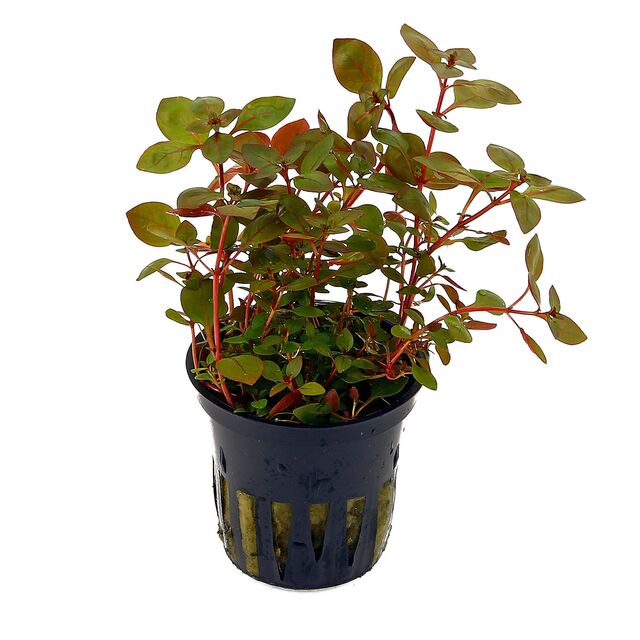Ludwigia is a genus of aquatic and semi-aquatic plants that belongs to the family Onagraceae. The genus is composed of around 82 different species that are widely distributed across the world, including the Americas, Africa, Asia, and Australia. The plants are characterized by their unique features, including their colorful leaves, intricate flowers, and their ability to grow both submerged and emersed.
Ludwigia plants are popular among aquarium enthusiasts, as they add a splash of color to tanks and can thrive in a wide range of water parameters. They are also often used in wetland restoration projects, as they can help to filter water and improve the overall health of the ecosystem.
Appearance and Growth
The appearance of Ludwigia plants can vary greatly depending on the species, with some plants growing tall and thin, while others are short and bushy. Most Ludwigia plants have elongated leaves that range in color from green to red or yellow, and some species produce small flowers that can be either pink, red, or yellow.
Ludwigia plants are generally fast-growing and can quickly establish themselves in new environments. They can grow either submerged or emersed, with submerged plants having narrower leaves than emersed plants. When grown emersed, Ludwigia plants can reach heights of up to 4 feet tall, while submerged plants tend to stay much smaller.
Habitat and Distribution
Ludwigia plants are found in a wide range of habitats, from swamps and wetlands to shallow ponds and streams. Some species can also be found growing along riverbanks and in ditches or marshy areas.
The genus is widely distributed across the world, with species found in North and South America, Europe, Africa, and Asia. Some species, such as Ludwigia peploides, have become invasive in certain areas, such as the United States, where it is considered a noxious weed.
Uses
Ludwigia plants have a variety of uses in different fields, including:
- Aquariums: Ludwigia plants are popular among aquarium enthusiasts, as they can add a splash of color to tanks and can thrive in a wide range of water parameters.
- Wetland restoration: Ludwigia plants are often used in wetland restoration projects, as they can help to filter water and improve the overall health of the ecosystem.
- Medicinal uses: Some species of Ludwigia have been used in traditional medicine to treat a variety of ailments, including fever, coughs, and stomach issues.
- Food: In some cultures, Ludwigia plants are used as a food source, with the leaves and stems being consumed either raw or cooked.
Cultivation and Care
Ludwigia plants are relatively easy to care for and can thrive in a variety of conditions. When growing Ludwigia plants in an aquarium, it is important to ensure that the water is well-filtered and that the plants are receiving enough light. Most species of Ludwigia prefer slightly acidic water with a pH range of 6.0-7.5.
When grown emersed, Ludwigia plants prefer moist soil that is well-draining. They should be planted in an area that receives plenty of sunlight or placed under grow lights. Ludwigia plants should be fertilized regularly, and the soil should be kept consistently moist.
Propagation
Ludwigia plants can be propagated through stem cuttings, which should be taken from healthy, established plants. The cuttings should be planted in a nutrient-rich substrate and kept moist until roots begin to develop. Once the plants have established a strong root system, they can be moved to a larger tank or transplanted to an outdoor area.
In conclusion, Ludwigia plants are a versatile and colorful addition to any aquarium or wetland restoration project. With their unique features and ease of care, they are a great choice for both beginner and experienced plant enthusiasts. Additionally, their potential medicinal and food uses make them a valuable resource in certain cultures.
However, it is important to note that some species of Ludwigia can become invasive in certain areas and may require management to prevent them from spreading uncontrollably. It is crucial to research the specific species before introducing them to a new environment and to follow any regulations or guidelines set by local authorities.
Overall, Ludwigia plants are a fascinating and beautiful genus that deserves more attention and appreciation. With their ability to thrive in a variety of conditions and their numerous potential uses, they have the potential to make a significant impact on both aquatic and terrestrial ecosystems.







![]()
